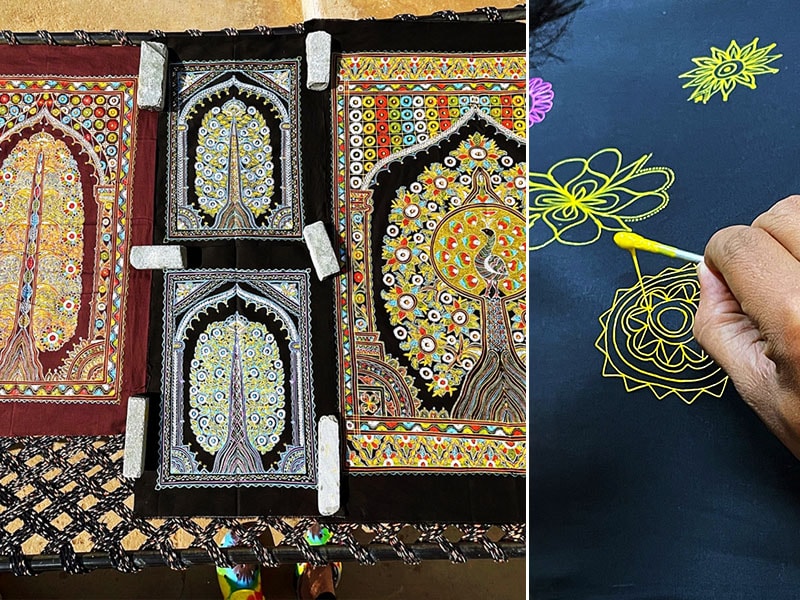
A Thirty-Year Artistic Journey with Copper

Amin Gulgee: Forging Identity and Innovation in Contemporary Pakistani Art
Over the span of three decades, Karachi-based artist Amin Gulgee has challenged traditional artistic conventions with a diverse practice that spans metal sculpture, immersive performance art, and collaborative curation. A new monograph, Amin Gulgee: No Man’s Land (Skira, 2025), edited by John McCarry, brings long-overdue attention to the breadth and depth of Gulgee’s artistic achievements. Rich in visual documentation, the monograph is a significant addition to South Asian art discourse and an insightful retrospective of one of Pakistan’s most compelling contemporary artists.
A Complex Legacy and Personal Tragedy
Gulgee is the son of the internationally acclaimed artist Ismail Gulgee, and his inheritance is both a privilege and a burden. The younger Gulgee carved a unique path by embracing a modern, interdisciplinary approach far removed from his father’s realist painting. His life was irrevocably changed in 2007 when his parents were tragically murdered—a trauma he revisited and processed through performative works like “Healing” (2010) and “Healing II” (2020), in which the artist and symbolism converge in acts of catharsis and vulnerability.
Crafting a Language in Metal
Gulgee’s primary medium—copper—anchors many of his most recognizable sculptures. From sensual curves to bold geometric structures, his metalwork encompasses spiritual motifs, mathematical explorations, and architectural sensibilities. Installations such as Memory Garden (2024), shown at the National Museum of Qatar, and his modular creations like Metropolis II (2006) reveal an artist deeply attuned to form, texture, and space. Gulgee eschews traditional sketching methods, instead allowing his intuition to guide him in the studio. His process is a spiritual and material dialogue, as tactile as it is conceptual.
Spirituality Woven with Modernity
Gulgee’s references to Islamic calligraphy are thoughtful reinterpretations rather than mere aesthetic nods. He weaves Qur’anic verses and traditional forms into contemporary contexts, creating work that is meditative and modern. When criticized in earlier literature—such as in Akbar Naqvi’s seminal art history book Image and Identity—for labeling his practice as “Islamic art,” Gulgee counteracts these assumptions through work that is pluralistic, postmodern, and idiosyncratic.
The Book: Neither Catalogue Nor Critique Alone
No Man’s Land occupies a middle ground between academic study and visual archive. Its essays, contributed by curators, artists, and scholars—including Kishwar Rizvi and Simone Wille—shed varied light on Gulgee’s aesthetic philosophy. Some contributions, though too brief to fully expand on their observations, nonetheless deepen an understanding of Gulgee as an innovator pivoting between past tradition and future possibilities.
Highlights of the volume include an engaging interview by curator Maryam Ekhtiar, in which the artist discusses the impact of the pandemic on his practice and reveals inspirations ranging from Mughals’ charbagh gardens to Gaudi’s Park Güell in Spain. Equally valuable are personal essays, such as one by Gemma Sharpe, that contextualize Gulgee’s provocative performance art within wider South Asian contemporary art dialogues.
Performing the Self
Gulgee’s performance works stand out not only for their theatricality but also for their emotional honesty. Often staged in his eponymous Amin Gulgee Gallery in Karachi, his collaborative performances invite collective exploration of identity, gender, memory, and ritual. Pieces such as “Non-binary Cube” (2022) challenge social binaries and echo his lifelong embrace of queerness, individuality, and spectacle. As writer H. M. Naqvi notes, both the artist and the book documenting his career “demand attention.”
Reflecting Larger Trends in South Asian Art
Gulgee’s multifaceted work mirrors a broader shift in Pakistan’s contemporary art scene—from painting-centric to mixed media, from solitary practice to performance and collective engagement. Yet, much of what makes Gulgee’s work iconic—his use of copper, choreographed installations, and mystically inclined aesthetics—remains underrepresented in regional scholarship. No Man’s Land thus serves as the first comprehensive monograph capturing this pivotal figure’s contribution to modern South Asian art.
Conclusion: A Monument Still in the Making
That it took three decades for a proper volume on Amin Gulgee to emerge is a reflection of both the rich complexity of his work and the challenges of publishing serious critical discourse in Pakistani arts. But No Man’s Land fills a gap, offering voices and visuals that together illuminate the artist’s journey—personal, spiritual, experimental, and performative.
Amin Gulgee continues to defy categorization, and that may be precisely the point. As an artist, curator, and catalyst, his practice is not bound by medium or movement but animated by an enduring search for connection—between form and